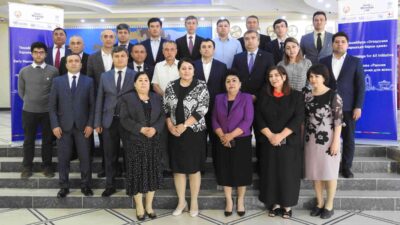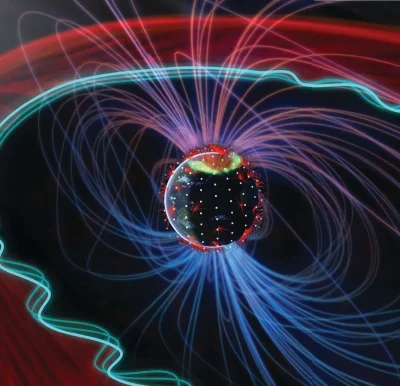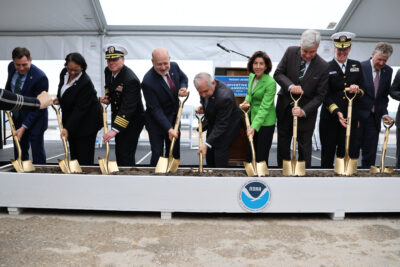Industry News
£5.7m investment will triple computing capacity for atmospheric data analysis
UK Research and Innovation has invested £5.7m (US$7.15m) in a compute cluster that will reportedly triple the processing power for analyzing atmospheric science data. The cluster will be available for scientists to use by the summer of 2024.
Known as LOTUS, the expanded parallel compute cluster will enable a much greater volume of computing tasks and multiple streams of data analysis to be done at the same time. LOTUS is part of JASMIN, a data-intensive supercomputer used by researchers at the National Centre for Atmospheric Science with support from the Centre for Environmental Data Analysis.
Tripling the current capacity to around 55,000 compute cores means that LOTUS users – of which there are currently 1,500 – will experience better performance and reduced task queuing time.
Spire Global to develop an AI-powered model for long-range forecasting
As part of a multi-million-dollar deal, Spire Global is to provide a financial firm with its High-Resolution Weather Forecast model, which offers a six-day outlook powered by proprietary data collected from space, and develop an AI-powered model for long-range forecasting.
Training AI weather models
Spire will build on its recent collaboration with Nvidia to leverage Earth-2, Nvidia’s platform for weather and climate change modeling, to train and run AI weather models. These models are projected to increase the accuracy of weather forecasts and produce long-range probabilistic forecasts at unprecedented speeds.
Spire’s multipurpose constellation of satellites, using radio occultation technology, captures precise vertical profiles of temperature, pressure and humidity across the globe, including under-observed areas and remote regions.
Tajikistan advances Early Warnings for All initiative through local-level workshops
Tajikistan has organized a series of local-level workshops under the Early Warnings for All (EW4ALL) initiative to bolster its resilience against natural hazards and climate change impacts.
Local Early Warnings for All workshops
The local workshops, held on April 19 in Khujand, April 24 in Khorog, and April 30 in Bokhtar, represent a crucial step toward realizing the EW4ALL objectives, fostering inclusivity and empowering communities to take proactive measures in the face of imminent threats. Bringing together key stakeholders, including local and national level government representatives, UN agencies and international partners, the workshops underscored the urgency of bridging the gap in early warning coverage in regions of the country that are vulnerable to avalanches, earthquakes, floods, mudflows and landslides.
EXCLUSIVE FEATURE: How are experts developing space weather forecasts for geomagnetic storms?
Space weather could cause chaos on Earth unless further developments in forecasting are made, with geomagnetic storms at risk of disrupting radio signals and navigation systems and even causing blackouts. Meteorological Technology International speaks to experts in the space weather sector to find out what is being done to ensure we are well prepared for such events
The first recorded telescope observations of a solar flare, made independently by English astronomers Richard Carrington and Richard Hodgson, occurred on September 1, 1859. A coronal mass ejection (CME) reached Earth 17.6 hours later, causing a powerful geomagnetic storm with aurorae reported as far south as Cuba and Hawaii.
UK Space Agency invests £1.8m in satellite technology
The UK Space Agency has invested £1.8m (US$2.2m) in technologies to help satellites measure Earth’s changing shorelines, estimate levels of biomass, predict weather forecasting and manufacture medicines in space.
Andrew Griffith MP, Minister of State at the Department for Science, Innovation and Technology, said, “From more accurate weather forecasts to manufacturing medicines on a bigger scale, ambitious UK space teams are developing pioneering solutions in space to enhance our life on Earth. This £1.8m government fund will grow our economy through new innovation while helping to keep space sustainable and deliver more key discoveries for many years to come.”
The projects
Argans – Global shorelines capability
Satellite remote sensing company Argans has received £250,000 (US$312,000) for its ‘Global shorelines capability’ project.
NOAA breaks ground on US$147m Marine Operations Center in Rhode Island
The Department of Commerce’s National Oceanic and Atmospheric Administration (NOAA) broke ground for a facility on Naval Station Newport in Rhode Island that will serve as the future home of the NOAA Marine Operations Center-Atlantic.
Marine Operations Center Facility
In December 2023, the US Navy, on behalf of NOAA, awarded US$147m to Skanska USA to build the new facility. Its design and construction is partly funded by the Inflation Reduction Act, the largest climate investment in history, as part of President Biden’s Investing in America agenda.
The facility will include a pier to accommodate four large vessels, a floating dock for smaller vessels, space for vessel repairs and parking and a building to be used for shoreside support and as a warehouse.
Earth observation could drive US$3.8tn in economic growth by 2030, World Economic Forum reports
The World Economic Forum has released a report that reveals that Earth observation (EO) data has the potential to drive over US$3tn in cumulative economic benefits globally by 2030 while advancing a wide range of climate and nature solutions.
Amplifying the Global Value of Earth Observation, published in collaboration with Deloitte, integrates the perspectives of 40 industry, technology and climate leaders committed to driving sustainable value through EO applications. The report breaks down the economic potential of EO technologies across sectors and shows how increasing their adoption worldwide could propel the shift to a nature-positive and net-zero global economy.
CREWS Initiative grants US$7m to early warning systems project in the Caribbean
The Climate Risk and Early Warning Systems (CREWS) Initiative has granted US$7m in funding for a new three-year multi-hazard early warning systems (EWS) project in the Caribbean region.
According to the CREWS team, the Caribbean is the second-most disaster-prone region in the world and is highly exposed to natural hazards such as hurricanes and tropical storms, floods, landslides and storm surges.
CREWS Caribbean 2.0 project
The CREWS Caribbean 2.0 project will build on a recently completed project to continue strengthening early warning systems in the region. The project will be led by WMO and UNDRR, and implemented under the leadership of regional organizations including the Caribbean Meteorological Organization (CMO), the Caribbean Disaster Emergency Management Agency (CDEMA), and the Caribbean Institute for Meteorology and Hydrology (CIMH).








